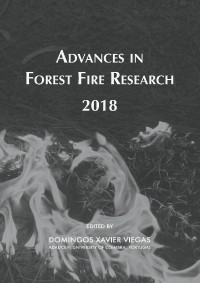Please use this identifier to cite or link to this item:
https://hdl.handle.net/10316.2/44554| Title: | An experimental investigation of the effect of grass fuel load on grassfire behaviour | Authors: | Cruz, Miguel G. Sullivan, Andrew L. Gould, James S. Hurley, Richard J. Plucinski, Matt P. |
Keywords: | fire behaviour modelling;fire prediction;fire danger rating | Issue Date: | 2018 | Publisher: | Imprensa da Universidade de Coimbra | Journal: | http://hdl.handle.net/10316.2/44517 | Abstract: | The effect of grass fuel load on fire propagation, behaviour and fire danger has been a contentious issue for some time in Australia. Various implementations of fire behaviour and fire danger formulations have placed different emphases on the effect of fuel load on model outputs, which has created uncertainty in the operational assessment of fire potential and has led to user and public distrust in the model outputs. A field-based experimental burning program was conducted to quantify the effect of fuel load on the rate of spread and behaviour of fire in grasslands. A total of 58 experimental fires (33 x 33 m plots) conducted at six sites across Australia were analysed. Mean fuel loads ranged between 0.17 kg/m2 and 1.05 kg/m2. Fire spread rate and fireline intensity ranged between 12.5 and 150 m/min and 1260 and 18 700 kW/m, respectively. Contrary to current modelling assumptions used in Australia, we found an inverse relationship between fuel load and fire spread rate in grasslands; i.e. as fuel load increases, fire rate of spread decreases. This result is valid for grasslands where fuel load is not a limiting factor for fire propagation (e.g., load >0.05 kg/m2). We model the effect of fuel load on the rate of fire spread through regression analysis and an iterative backtracking method to produce a fuel load function that can be applied to current recommended operational grassfire spread models used in Australia. We found that areas with standing continuous grass have the potential to sustain very high rates of fire spread, regardless of the fuel load. An increase in fuel load does not result in an increase in rate of fire spread, as assumed in certain modelling frameworks and some long held beliefs in Australia. | URI: | https://hdl.handle.net/10316.2/44554 | ISBN: | 978-989-26-16-506 (PDF) | DOI: | 10.14195/978-989-26-16-506_37 | Rights: | open access |
| Appears in Collections: | Advances in forest fire research 2018 |
Files in This Item:
| File | Description | Size | Format | |
|---|---|---|---|---|
| an_experimental_investigation_of_the_effect.pdf | 1.02 MB | Adobe PDF |  |
Items in DSpace are protected by copyright, with all rights reserved, unless otherwise indicated.
